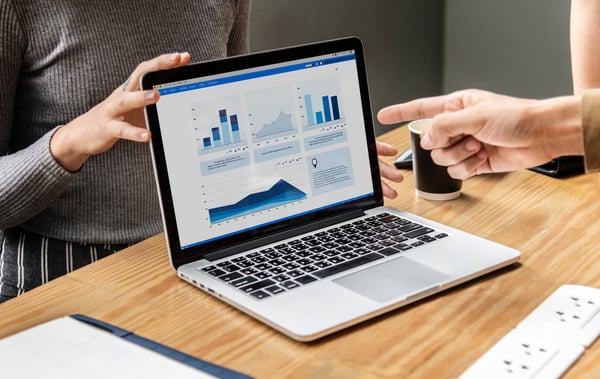
This article originally appeared on Forbes, on April 16, 2019
In my last column, I shared Five Meaningful Influencer Marketing Metrics You Haven't Used Yet and received a positive response to the new way of thinking about measuring influencer marketing. Given that, I thought I'd round out that piece with four additional metrics we use at Carusele on our influencer marketing programs.
As with the first article, the "right" metrics for your campaign depend a bit on what you sell, who you sell it through and what metrics you use to measure your other digital marketing. Even with that caveat, any brand or retailer should find at least one methodology in this combined list of nine options that will work for their business.
1. 'Test And Learn' Brand Lift Study
What It Is: This self-service tool is offered by Facebook. It allows brands the ability to survey exposed and unexposed audiences to determine the impact of a given campaign. This is only available to brands that are boosting influencer content on Facebook and/or Instagram because it only measures the paid exposure.
Pros: Facebook handles the potentially difficult methodology of separating the brand's test and control group, and it's the only way to get this data because it occurs within the platform. The templated methodology allows brands to ask questions regarding whether the audience would recommend the brand to a friend or how likely they are to consider the brand.
Cons: Because the survey questions are templated and always end with "an ad from [name of page from which the ad was being served]," it can be tricky to ensure the influencer content about the brand is properly recognized. In addition, Facebook has a minimum spend requirement per page in order to get a large enough sample size. In our programs, we typically boost from at least three influencer accounts (and often many more). While there is no additional cost beyond the media spend, this requirement could make the media spend problematic.
2. Custom Brand Lift Study
What It Is: Brands can overcome the limitations of the "test and learn" brand lift study by having Facebook's internal research team conduct a custom brand lift study on the brand's behalf. Similar to test and learn, there are five questions, but now they can be customized to fit a brand's particular needs.
Pros: Using a custom study, a brand has its choice of questions around not only ad recall but message retention, and perceptions shift metrics that might be important to a campaign. For example, instead of boilerplate like "Would you recommend Brand X?" a brand could choose "Do you believe Brand X is a good corporate citizen?"
Cons: Facebook has unpublished minimum spend requirements for each Facebook or Instagram page from which the content was published, so the pricing can escalate quickly with multiple influencers involved. While all the spend goes to media (there is no additional cost for the study), we estimate that an influencer program would likely need to be in the $200,000 range to have sufficient media weight to use this methodology.
3. Sales Lift Study
What It Is: The proverbial Holy Grail of marketing measurement is a statistically valid look at the lift generated from a given campaign. Under this method, a large representative panel is used made up of people who have opted to have their purchase data analyzed. This allows the researchers to find a large group of past buyers and split them so that some see the new content while others do not.
Pros: Because the panel is so large and past buying behavior is the same between groups, any sales lift among the exposed group that doesn't appear in the control group is very likely caused by the marketing campaign. This is a tested methodology in other types of marketing. Early influencer studies conducted this way show impressive sales results.
Cons: Because this method uses tracking pixels to ensure the exposed group has seen the content, and because the social networks don't allow these tracking pixels on social posts, it's most effective at measuring those who saw blog content versus a full influencer program. In fact, social shares in this kind of study cannot mention the brand to ensure there is no contamination across the test and control groups.
4. Foot Traffic Lift Study
What It Is: By creating test and control groups of mobile devices and measuring the exposure to influencer content among them, it becomes possible to measure the lift in frequency in which those devices entered a particular retailer. It uses the mobile device's location data to track these visits and isolate the lift, if any, among the two groups.
Pros: This real-world study doesn't require individuals to recall any behaviors but instead measures the devices that are constantly carried with them. While there are some obvious potential hazards (people viewing content on a desktop and then going to the store with their device, or people getting a new device in between exposure and heading to the store), these should "wash out" in a well-designed test and control group structure.
Cons: While location data tells us if a device was in a particular store, it doesn't tell us what they bought, if anything. As a result, this study is best for retailers and not for brands sold in third-party retailers. In addition, to get enough statistical validity would likely require a total influencer program budget of roughly $400,000.
Summary
When brands set up their influencer programs in ways that allow them to be optimized and boosted throughout the campaign, a number of powerful new metrics become available. If influencer marketing is going to go from a well-regarded experiment to a staple of brand marketers, we'll all want this type of measurement to become routine.
-1.png?width=504&height=360&name=Carusele%20logo%20%C2%AE%20logo%20Color%20(2)-1.png)